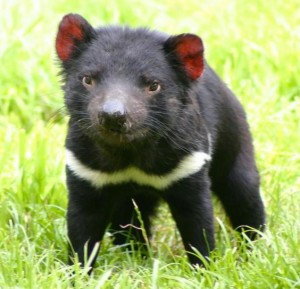 In 1810, the renowned Professor of Animal Medicine, Mr Delabere Blaine, published the fourth edition of his bestselling manual “A Domestic Treatise on Diseases of Horses and Dogs”. Mr Blaine’s book promises “A Description of Every Disease To which they are generally liable, and the Mode of Cure” and is a riveting read. Amongst the advice on how to buy horses without being fleeced, adverts for Wash For Canker In The Ears (a very reasonable 2s6d a bottle) and the alarmingly named Purging Balls (2s6d per set, mop and bucket not included), lies the first printed description of an extremely distasteful affliction that Mr Blaine had observed in both his male and female canine patients: “The vagina takes on an ulcerous state accompanied with a fungous excrescence, which is brought on oftentimes from the horrible brutality of boys who force dogs from bitches in the act of copulation. This complaint admits of no care, that I have witnessed. In the penis of dogs also a similar fungous excrescence sometimes forms, but it does not appear to erode the neighbouring parts much: it increases rather than diminishes the size, till its offensiveness obliges the animal to be made away with.”
In 1810, the renowned Professor of Animal Medicine, Mr Delabere Blaine, published the fourth edition of his bestselling manual “A Domestic Treatise on Diseases of Horses and Dogs”. Mr Blaine’s book promises “A Description of Every Disease To which they are generally liable, and the Mode of Cure” and is a riveting read. Amongst the advice on how to buy horses without being fleeced, adverts for Wash For Canker In The Ears (a very reasonable 2s6d a bottle) and the alarmingly named Purging Balls (2s6d per set, mop and bucket not included), lies the first printed description of an extremely distasteful affliction that Mr Blaine had observed in both his male and female canine patients: “The vagina takes on an ulcerous state accompanied with a fungous excrescence, which is brought on oftentimes from the horrible brutality of boys who force dogs from bitches in the act of copulation. This complaint admits of no care, that I have witnessed. In the penis of dogs also a similar fungous excrescence sometimes forms, but it does not appear to erode the neighbouring parts much: it increases rather than diminishes the size, till its offensiveness obliges the animal to be made away with.”
Mr Blaine’s description of canine transmissable venereal tumour (CTVT) may predate by more than two centuries the publication in Science last week of the genomic sequence of the CTVT tumour cells (DOI: 10.1126/science.1247167) but it would be hard to better, as attested by the gruesome photos accompanying the media kerfuffle surrounding the story. CTVT is grotesque, but it is also fascinating: very simply, it is the most successful cancer of all time. Arising some 11,000 years ago in a dog breed similar to the Alaskan Malamute, CTVT is a parasitic tumour, whose cells can migrate from dog to dog during close contact, especially sexual (needless to say, the actions of brutal boys are no longer thought necessary). In the long years since its accidental birth, it has managed to sign a truce with its host species, under the terms of which both can survive. The fine print of this truce carries lessons about tumour evolution which may well shed light on how modern cancers, with their frantic drive to constantly mutate, can be treated.
In 2012, Charlie Swanton of the CRUK London Research Institute showed in one of that year’s most cited papers that the cancer cells which comprise a modern tumour are not all the same, and exist in a state of continuous and distinct evolution. This alarming heterogeneity means that a tumour can rapidly evolve to evade therapeutic challenges, and working out how to deal with this is a central preoccupation in current cancer research. Recently, Charlie’s lab has gone on to show that the wilder a tumour is in its desire to mutate, the worse is the prognosis for the patient; colon cancers in which the entire genome has doubled undergo macroevolutionary jumps, where immense changes happen very rapidly, and this is a prognostic nightmare. In the end, however, all this mutation is counterproductive: taking over its host is a very bad evolutionary strategy for a tumour, as it ends in the death of both.
 In contrast to the frantic activity of modern tumours, CTVT is rather restrained. After an initial period of overgrowth, which gives rise to the unpleasant excrescences described by Delabere Blaine, the tumour generally regresses, as the host’s immune system gains the upper hand and kills it off. Animals that have had the tumour acquire immunity and cannot be reinfected, but during its active life, the tumour will have had ample opportunity to infect another animal, assuming its doggy host has been sexually active, or even had friends with inquisitive noses. As a sign of its evolutionary perfection, CTVTs are clonal – all the cells in a tumour are the same – as there is no need for further drastic mutation. CTVT cells have in fact stripped down their genomes to only what’s needed for their survival; for example, it’s impossible to tell what sex the original ancient progenitor animal was, as just one sex chromosome, an X, remains. You don’t need sex when you can clone yourself instead.
In contrast to the frantic activity of modern tumours, CTVT is rather restrained. After an initial period of overgrowth, which gives rise to the unpleasant excrescences described by Delabere Blaine, the tumour generally regresses, as the host’s immune system gains the upper hand and kills it off. Animals that have had the tumour acquire immunity and cannot be reinfected, but during its active life, the tumour will have had ample opportunity to infect another animal, assuming its doggy host has been sexually active, or even had friends with inquisitive noses. As a sign of its evolutionary perfection, CTVTs are clonal – all the cells in a tumour are the same – as there is no need for further drastic mutation. CTVT cells have in fact stripped down their genomes to only what’s needed for their survival; for example, it’s impossible to tell what sex the original ancient progenitor animal was, as just one sex chromosome, an X, remains. You don’t need sex when you can clone yourself instead.
How come there aren’t more examples of ancient parasitic tumours? Actually, it’s rather likely that infectious tumours have arisen through the ages in many species, but simply haven’t survived, either because the immune system of an infected animal has efficiently killed them, or because the tumours have wiped out a population. The latter, very worryingly, is what is currently happening to Tasmanian Devils, in which the only other natural example of a parasitic tumour, Devil Facial Tumour Disease (DFTD) is rapidly fatal and is having a devastating impact on the population.
DFTD and CTVT both arose in relatively inbred populations, and therein lies the key to their original success: the ability to evade their hosts’ immune systems for long enough to become established. Inbred animals are similar enough that cells transplanted between them are not viewed by the recipient’s immune system as foreign invaders, so they are tolerated and allowed to grow. This loophole in the immune system’s defences is a serious one, but not generally a problem for outbred populations such as ourselves; unless compromised by illness, our immune systems make short work of foreign cells, as the need for genetically compatible organ and bone marrow donors makes clear (As an aside, one rather plausible school of thought holds that the adaptive immune system of multicellular organisms evolved not just out of a need to fight infection, but also to wipe out parasitic cell lines such as cancers, whether generated within the body, or transmitted from outside).
Inbred populations may be the reason for the initial successes of DFTD and CTVT, but there’s more going on than that. CTVT is now a worldwide phenomenon, and DFTD is spreading into genetically distinct devil populations. Both tumours have evolved other means of evading the immune system, and indeed, scientists have known about CTVT’s ability to skip between unrelated hosts for more than a century: CTVT was the first tumour ever to be experimentally transplanted between animals, by the Russian veterinarian Mstislav Novinsky in 1876. So what’s going on?
The answer seems to lie in how both tumours get under the radar of the immune system. A common feature of many metastasising cancers is that they lose of a set of cell surface molecules, called the Major Histocompatiblity Locus, or MHC, proteins. MHC proteins have the important function of presenting antigens to the T cells of the adaptive immune system, which bind the antigens, and if they look dodgy, initiate an immune response to kill the cells on which the antigen is presented. Cancers lacking MHC proteins cannot present antigen, and are therefore ignored by the adaptive arm of the immune system. CTVTs have abnormally low levels of MHC proteins, but unlike other cancers, where MHC proteins are lost because their genes are mutated beyond help, the genes of the CTVT MHC proteins are merely sleeping. This means that during the first florid phase of the cancer, a tumour grows rapidly as the immune system cannot see it. Then, before the host grows too sick, the tumour switches its MHC proteins back on, and is reined back by an immune response. It’s a very neat way of propagating oneself.
Genes that can be switched on and off can be artificially regulated, and this turns out to be true for CTVT MHC genes; treatment with various chemicals results in the reappearance of MHC proteins on the cell surface of CTVT cells in the lab. Very happily, this also turns out to be the case with the Tasmanian devil facial tumours, and although there’s more going on that we don’t yet understand, there may be a possibility of vaccinating surviving animals against this deadly scourge.
What can we learn from this about human cancers? Firstly, the immune system is a wonderful thing; so much so that cancer immunotherapy, whose recent successes have galvanised those in the cancer world and beyond, may be the long-awaited breakthrough in cancer treatment. Secondly, we don’t know nearly enough about how the immune system works, and a lot more basic research is required to underpin any therapeutic possibilities; if a parasitic cancer were ever to arise in the human population, fighting it will be a lot easier if we already understand the pathology of CTVT and DFTD. Lastly, truly successful cancers want the same thing for themselves as we do: to become a chronic disease that a host can live with, and not die of. Perhaps we are wrong when we speak of wiping out cancer, or fighting it; should we instead be negotiating a peaceful outcome to a situation that may otherwise result in mutually assured destruction?
Note: Jim Kaufman and Hannah Siddle, who with their collaborators are trying very hard to figure out how to stop Tasmanian devils being destroyed by DFTD, have written an extremely informative review about contagious cancers, from which much of my information has been taken. You can find it here


Discussion
No comments yet.